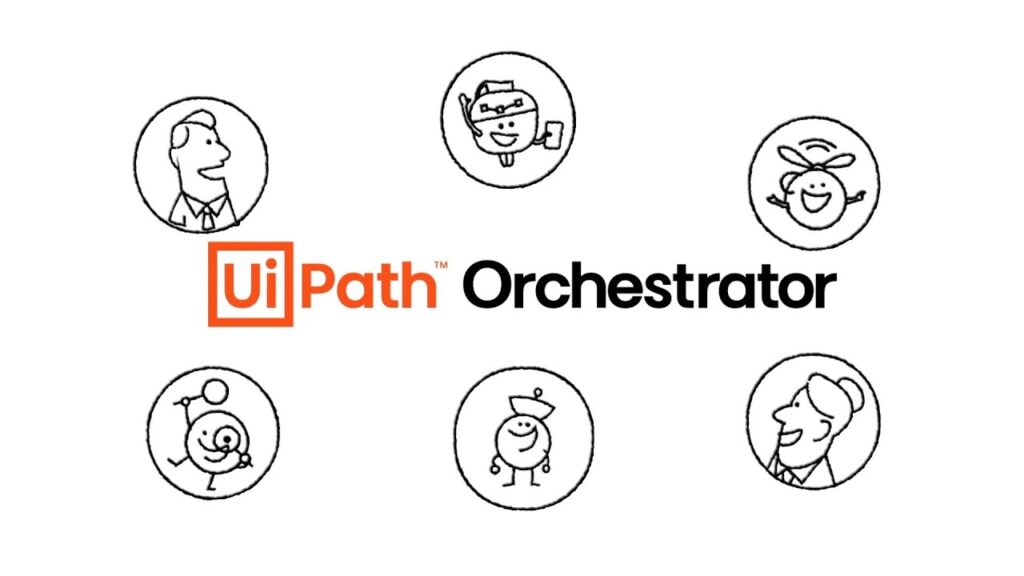Business Excellence
AI-Driven Business Excellence: Transforming organisations for the future
Elevate your business to new heights of success.
As a visionary leader, you have the power to transform your organisation through artificial intelligence (AI): this exciting opportunity enables impactful change that drives performance and innovation. To harness this potential, you need more than vision; you require cutting-edge tools, strategies, and insights that foster an environment where continuous improvement and AI-driven innovation thrive.
Why Business Excellence must be aligned with AI
In today’s competitive landscape, organisations prioritizing AI-driven business excellence not only thrive but also lead their industries. This course equips you with advanced frameworks and strategies that align with modern business needs and technological advancements. Learn to optimise processes, enhance customer satisfaction, and cultivate an inclusive culture that leverages AI to drive performance and innovation. Embracing AI-driven business excellence is essential for staying ahead in your industry.
Key course topics
1. Leadership and strategic AI planning
Develop leadership skills to drive transformation by aligning AI strategy with business goals.
2. Customer focus and AI value creation
Exceed diverse customer expectations and create lasting value through AI enhancements.
3. AI process management and innovation
Master methodologies such as Lean and Six Sigma to streamline processes and foster AI-driven innovation.
4. Workforce excellence in the age of AI
Build a high-performance, inclusive workforce that remains engaged and empowered through AI tools. Breaking through barriers
Transformation presents challenges
Resistance to change, inefficiencies, and a lack of alignment between strategy and execution. Without the right approach, even the most ambitious AI initiatives can fall short. This course equips you with the skills to overcome these barriers—whether managing resistance, fostering AI innovation, or creating a sustainable and agile organisation that effectively responds to challenges and opportunities.
Tackle these common challenges
• Managing organisational resistance
Implement strategies to overcome resistance to AI-driven change and foster buy-in at all levels.
• Driving AI innovation
Cultivate a culture of creativity and AI innovation while maintaining operational efficiency.
• Sustaining excellence in a digital world
Use techniques to ensure long-term growth and continuous improvement through AI.
Achieving excellence and growth
Imagine leading your organisation to new heights of success, where AI-driven excellence becomes the standard embedded in every aspect of your business. This course provides a comprehensive blueprint to turn that vision into reality. You’ll develop a roadmap for driving excellence, backed by globally recognized models and real-world case studies. You will be equipped not just to improve but to excel—positioning your organisation for continued success and establishing yourself as a leader in your field.
Desired outcomes
• Improved organisational performance Achieve higher efficiency, greater customer satisfaction, and measurable results through AI. • Inclusive and innovative AI culture Build a workplace thriving on diversity, creativity, and continuous improvement powered by AI. • Long-term business growth Establish a foundation for sustained excellence and future opportunities using AI technology.
Chapter 1: A. organisational Structures and Culture
1. Organisational Structures:
Incorporate Agile methodologies and AI tools like Trello and Asana that facilitate flexible, adaptive structures to respond quickly to market changes.
2. Organisational Culture:
Foster a culture of data-driven decision-making using Tableau and Power BI to enhance employee engagement and satisfaction.
Chapter 2: B. Leadership Challenges
1. Roles and Responsibilities of Leaders:
Emphasise the importance of leaders in guiding teams through AI integration, utilizing platforms like Slack for communication.
2. Roles and Responsibilities of Managers:
Focus on managers' roles in leveraging AI analytics from tools like Google Analytics to support team performance and decision-making.
3. Change Management:
Implement AI-driven change management frameworks like Prosci ADKAR and ChangeGear to better predict and manage resistance to change.
4. Motivating, Influencing, Negotiating, Resolving:
Utilise AI tools for sentiment analysis, such as IBM Watson and Qualtrics, to enhance communication and negotiation strategies.
5. Empowerment:
Empower employees by utilizing AI tools like Monday.com that promote autonomy and informed decision-making.
Chapter 3: C. Teams and Team Processes
1. Types of Teams:
Explore virtual and hybrid team models supported by AI collaboration platforms like Microsoft Teams and Zoom.
2. Stages of Team Development:
Use AI-driven tools for real-time feedback on team dynamics, such as 15Five or Lattice.
3. Team-Building Techniques:
Implement AI simulations for team-building exercises using platforms like Miro or Lucidspark to enhance collaboration.
4. Team Roles and Responsibilities:
Apply AI algorithms in tools like Workday to identify strengths and allocate roles effectively within teams.
5. Team Performance and Evaluation:
Utilise AI analytics from platforms like Klipfolio to monitor team performance and foster continuous improvement.
Chapter 4: Code of Ethics for AI
Discuss the ethical considerations of implementing AI technologies in organisational leadership and decision-making.
Chapter 5: A. Strategic Planning Models
Integrate AI analytics from tools like Miro for more informed strategic planning and forecasting.
Chapter 6: B. Business Environment Analysis
1. SWOT Analysis:
Enhance SWOT analysis with AI-driven insights from SWOT Analysis Tool or MindMeister for a comprehensive view of strengths and weaknesses.
2. Market Forces:
Use AI to Analyse real-time market trends and consumer behavior with tools like SEMrush and Ahrefs for strategic alignment.
3. Stakeholder Analysis:
Leverage AI tools like EngagementHQ to gather stakeholder sentiment and influence strategic decisions.
4. Technology:
Assess technological advancements and their implications using AI platforms like Gartner for competitive advantage.
5. Internal Capability Analysis:
Use AI to conduct internal capability assessments through tools like IBM Cognos for identifying improvement opportunities.
6. Legal and Regulatory Analysis:
Monitor legal and regulatory changes using AI tools like Compliance.ai for real-time compliance tracking.
Chapter 7: Strategic Plan Deployment
1. Action Plans:
Develop adaptive action plans using AI-driven insights from tools like Smartsheet to respond to dynamic market conditions.
2. Resource Allocation and Deployment:
Optimise resource allocation through AI analytics using SAP Integrated Business Planning for enhanced operational efficiency.
3. organisational Performance Measurement:
Implement AI tools like Tableau and Google Data Studio for comprehensive performance measurement and reporting.
4. Quality Function in Strategic Deployment:
Utilise AI analytics from platforms like Qlik to ensure quality management is integrated into strategic deployment.
Chapter 8: Management Skills and Abilities
1. Principles of Management:
Apply AI-driven insights from AI-based dashboards to improve managerial decision-making processes.
2. Management Theories, Styles, and Tools:
Evaluate the influence of AI on contemporary management practices using Management 3.0 methodologies.
3. Interdependence of Functional Areas:
Use AI tools like Zoho One to facilitate collaboration and communication across functional areas.
4. Human Resources (HR) Management:
Implement AI in recruitment and talent management through platforms like LinkedIn Talent Solutions and HireVue to enhance workforce effectiveness.
5. Financial Management:
Utilise AI for predictive financial modeling and risk assessment with tools like Kyriba and Adaptive Insights.
6. Risk Management:
Employ AI tools like RiskLens for proactive risk identification and mitigation strategies.
7. Knowledge Management:
Integrate AI systems like Confluence and Notion to enhance knowledge sharing and organisational learning.
Chapter 9: Communication Skills and Abilities
1. Communication Basics:
Leverage AI communication tools like Grammarly and Otter.ai to enhance clarity and efficiency in messaging.
2. Communications in a Global Economy:
Utilise AI for improving cross-cultural communication and collaboration with tools like Transifex and Unbabel.
3. Communications and Technology:
Explore AI-driven platforms like Slack and Microsoft Teams for effective communication in a digital environment.
Chapter 10: Project Management
1. Project Management Tools:
Integrate AI-driven project management software like Wrike and ClickUp for enhanced tracking and oversight.
2. Project Planning and Estimation Tools:
Utilise AI for accurate project planning and resource estimation using Forecast and ProjectLibre.
3. Measure and Monitor Project Activity:
Implement AI analytics from tools like Monday.com to measure project progress in real-time.
4. Project Documentation:
Automate project documentation processes using AI technologies like DocuSign and Notion.
Chapter 11: Quality System
1. Quality Mission and Policy:
Define quality standards informed by AI insights from QMS software like MasterControl.
2. Quality Planning, Deployment, and Documentation:
Utilise AI for systematic quality planning and process documentation with tools like ZenQMS.
3. Quality System Effectiveness:
Measure the effectiveness of quality systems with AI-driven metrics from platforms like Minitab.
Chapter 12: Quality Models and Theories
1. BNQP Criteria for Performance Excellence:
Evaluate performance excellence using AI-enhanced models like Baldrige Performance Excellence Program.
2. ISO and Other Third-Party Standards:
Monitor compliance with quality standards using AI tools such as ISOTools.
3. Other Quality Methodologies:
Incorporate AI into traditional quality methodologies for enhanced effectiveness using frameworks like Lean Six Sigma.
4. Quality Philosophies:
Explore the integration of AI into established quality philosophies, such as Deming’s Principles.
Chapter 13: Problem-Solving Tools
1. The Seven Classic Quality Tools:
Enhance classic quality tools with AI-driven data analysis from platforms like QlikView.
2. Basic Management and Planning Tools:
Utilise AI to improve management and planning capabilities using Basecamp.
3. Process Improvement Tools:
Apply AI methodologies for continuous process improvement using Kaizen and DMAIC frameworks.
4. Innovation and Creativity Tools:
Foster innovation using AI tools like IdeaScale that promote creativity.
5. Cost of Quality (COQ):
Utilise AI analytics from SAS to assess and minimize the cost of quality.
Chapter 14: Process Management
1. Process Goals:
Establish AI-driven goals for enhanced process management using Lucidchart for visual representation.
2. Process Analysis:
Leverage AI for comprehensive process analysis and optimisation using ProcessMaker.
3. Lean Tools:
Apply AI in lean methodologies with tools like LeanKit to reduce waste and improve efficiency.
4. Theory of Constraints (TOC):
Use AI to identify and address constraints within business processes using TOC Thinking Processes.
Chapter 15: Measurement: Assessment and Metrics
1. Basic Statistical Use:
Implement AI for advanced statistical analysis and insights using tools like SPSS.
2. Sampling:
Enhance sampling techniques with AI for improved accuracy using SampleSizeCalculator.
3. Statistical Analysis:
Utilise AI for deeper statistical insights and predictive analysis through Statista.
4. Trend and Pattern Analysis:
Apply AI tools like Tableau for identifying trends and patterns in data.>br>
5. Theory of Variation:
Understand variations using AI-driven data analysis from Minitab.
6. Process Capability:
Use AI metrics for assessing and enhancing process capability with tools like SigmaXL
Chapter 16: Customer Relationship Management
Customer-Focused organisations
1. Internal customers
2. External customers
3. Segmentation
4. Customer needs
5. Customer satisfaction and loyalty
6. Basic customer service principles
7. Multiple and diverse customer management
Chapter 17 Supply Chain Management
A. Supplier Selection
B. Supplier Communications
C. Supplier Performance
D. Supplier Improvement
E. Supplier Certification, Partnerships, and Alliances
F. Supplier Logistics
Chapter 18 Training and Development
A. Training Plans
B. Needs Analysis
C. Training Materials/Curriculum Development and Delivery
D. Training Effectiveness and Evaluation
Take the First Step Toward Transforming Your Team!
Our in-house training services are designed with your unique goals in mind. Here’s how we work together to create lasting impact:
Step One: Training Needs Assessment
We collaborate to understand your team’s challenges and goals, tailoring every aspect of the training to your needs.
Step Two: Custom Design and Development
We craft a curriculum based on your specific requirements, ensuring it’s both practical and relevant.
Step Three: Expert Delivery
Our experienced trainers engage your team, fostering real-world skills.
Step Four: Monitoring Effectiveness
Together, we evaluate the program’s impact to ensure lasting results.
What About Costs?
Before we assess your needs and design your course, we can’t provide an accurate fee. For example, a one-day workshop on communication skills may differ significantly in cost from a multi-week leadership development program with advanced role-playing exercises and follow-ups. Each program’s cost depends on its complexity, duration, and materials required.
What’s Next?
The first step is a Training Needs Assessment. This allows us to define the program and provide a detailed proposal tailored to your goals and budget.
📅 Click Below to Schedule Your Session Use our calendar to book your session and start building a training program that delivers real value for your team.
🚀 Schedule Your Assessment Now!

Questions must be Answered in the first stage of Need Assessment :
Enroll Now!
Take the next step in your career. Enrol in the Transforming Your organisation with AI course today to unlock your potential as a leader in business excellence and drive significant change in your organisation!
Enrolment Information
“Enrol Now and Start Your Journey to Becoming a Business Excellence Manager!”
• Group Discounts: Special rates for teams and organisations.
• Contact Us: Reach out at info@consuledge.com or (02) 8530 2669 for more information.
Any Questions?
So we can get to know you and your needs better
Here's What We Can Help With :
Run into a problem using Consuledge ? Check out our Policy for set-up guides and feature release notes.
- Contact our sales team to talk about your LMS requirements
- Get customer support
- Contact our partnerships team
- Answer any other questions you may have
- Contact our sales team to talk about your LMS requirements
- Get customer support
- Contact our partnerships team
- Answer any other questions you may have
FAQ
What are the main challenges for Australian industries in achieving excellence?
As a Certified Manager of Quality and organisational Excellence (ASQ), I’ve extensively studied performance excellence frameworks such as the Malcolm Baldrige National Quality Award (MBNQA), Excellence Canada, and the European Excellence Award (EFQM). These models have been pivotal in the U.S. and other regions, enabling companies to enhance both manufacturing and services. However, Australian industries face distinct challenges in achieving excellence, including:
Limited Adoption of Global Best Practices: Australian organisations like Business Excellence Australia promote excellence, but there is often a gap in fully embracing and adapting global performance models. Many Australian companies only experiment with these frameworks rather than committing to them long-term, limiting their impact.
Lack of Focus on Operational Efficiency: While excellence frameworks emphasise operational efficiency, Australian industries often prioritize broad concepts over the practical, hands-on application of these principles. U.S. companies, for example, have embraced industrial engineering and efficiency-focused methodologies, a focus that has not been as strong in Australia.
Educational Gaps: Industrial Engineering is a key driver of operational excellence in the U.S., but in Australia, it is not as prominent in the academic or business community. This creates a skills gap in applying efficiency methodologies, leaving organisations struggling to achieve true excellence.
Tech-First Mentality vs. Operational Efficiency: While innovation is essential, Australian industries often emphasise technology at the expense of operational efficiency. A balanced approach is crucial—without efficiency, tech investments may fail to deliver the desired business outcomes.
Cultural Resistance to Efficiency: Efficiency is sometimes viewed negatively, perceived as a way to “cut corners” or reduce labor, creating friction between management and labor unions.
To overcome these challenges, Australian industries need a more committed, well-rounded approach to operational excellence, drawing from global best practices while addressing the unique needs of the local context.
What Are the Common Misconceptions and Mistakes Business Leaders Have About Excellence in Australia?
Based on my experience interviewing for excellence roles across various industries, I’ve noticed several misconceptions among Australian business leaders regarding excellence:
Overemphasis on Operations: Many leaders equate excellence with operational processes alone, neglecting other critical elements like customer focus, quality models, and organisational design. Excellence is holistic, not just operational.
Copy-Paste Syndrome: A common mistake is attempting to replicate the Toyota Production System (TPS) without understanding its core philosophy or adapting it to the local context. Simply copying Kaizen without understanding its cultural and historical foundation often leads to failed implementation.
Blind Benchmarking: Some leaders try to blindly replicate successful models from other companies without considering their unique organisational needs. Excellence requires a customised approach, not a one-size-fits-all solution.
Ignoring the System’s Bottleneck: Business leaders often focus on improving every part of the system rather than addressing the bottleneck—the key constraint limiting performance. This results in wasted effort and missed opportunities to make a real impact.
Efficiency vs. Effectiveness: Many believe excellence is solely about efficiency—doing things faster and cheaper. However, true excellence balances efficiency with effectiveness, ensuring that the organisation does the right things in the right way.
The Core Problems My Course Solves
Comprehensive Understanding: My course provides a holistic approach to excellence, covering operations, customer focus, quality systems, organisational design, and supply chain management.
Tailored Excellence: You’ll learn how to avoid blind benchmarking and adapt global excellence models to your specific organisational context.
Focus on Bottlenecks: We’ll focus on identifying and addressing your system’s key constraints, optimising what truly matters for maximum impact.
Balancing Efficiency and Effectiveness: The course emphasises the balance between efficiency and effectiveness, ensuring your efforts deliver meaningful, measurable results.
By completing the course, you’ll gain the skills to drive true excellence within your organisation, positioning yourself as a leader in business transformation and setting yourself up for future career growth.
Courses you might be interested in

The Symbiosis of Human and AI: How the Internet of Bodies Is Becoming Our New Nervous System

UiPath Orchestrator Isn’t Failing You — IIS, SQL Server, Elasticsearch, or Kibana Might Be

Top 5 Key Components of Robotic Process Automation (RPA): Orchestrating Success in Finance





